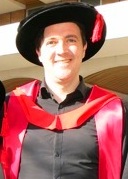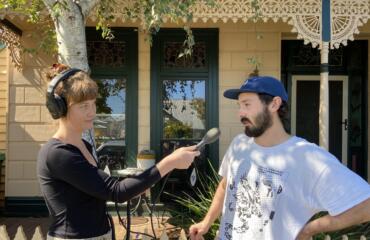‘My research was a narrative history that documented the establishment and development of Aboriginal community controlled health services.
It’s important to know that it’s not just Aboriginal history. It’s Australian history. These organisations and their history are Australian history, and people should know about it like they know Gallipoli. They should know the names of the leaders of Aboriginal political movements like they know Donald Bradman.
The great thing about the thesis was the documentation of this history. In conducting 30 oral history interviews, as well as investigating government and community archives, I found that many issues had been raised by Aboriginal people but were never documented.

The common thread running through all of the theory and different issues covered was the history of the Victorian Aboriginal Health Service. VAHS was all about Aboriginal people being proud about their Aboriginality. It was about that achievement; a service that was created and run by Aboriginal people.
I used VAHS as a case study of the broader community control sector. The community-controlled services were basically founded because no-one was paying attention to Aboriginal people or their ill health. They decided to do something for themselves and got things up and running from scratch.
It started with an outbreak of scabies at Lake Tyers in Gippsland. A group of Aboriginal women travelled down from Melbourne to support the Aboriginal community during this crisis. The government did nothing about the outbreak and instead blamed Aboriginal people for not taking proper care of their children. This injustice prompted the women to set up their own services in Melbourne.
While the services were health organisations in one aspect, they were also political. You have this combination of local grass roots activism and kin-related community caring, combining with political activism, and these organisations were growing out of them.
One example is the story of the Aboriginal community in Fitzroy: where the level of racism and discrimination as it was is something that we today can’t begin to understand. You have these Aboriginal women who have always worked for their community, holding it together and trying to keep families healthy. They were living in these dilapidated houses, people were dying … so basically, the women got together and set up VAHS.
“What was most fulfilling was hearing those stories: the passion, emotion, how proud these people were about their services. Some of these people hadn’t had the chance to tell their story. In the end, I found my interviews to be more of a conversation than a strictly academic oral interview.”
One thing that dismays the Aboriginal community is that these services are seen as something that was given to them by the government. The reality is that they had to fight and fight and fight to keep them going.
The community services were at the forefront of the Aboriginal political movement throughout the seventies, eighties and early nineties. They were the advocates for all types of community rights, including land. It became a place for Aboriginal people to meet, feel accepted and reconnect with their culture.
One thing I realised during my research was that it’s a lot about working in and with the Aboriginal community itself. Given the history of research in Aboriginal communities, it’s about giving back to the community, which can be a difficult process.
They know their own history and they want the younger generations to know. They feel that, as the original members of the organisation grow older, the younger ones don’t quite understand what was fought for and what was achieved.
What was most fulfilling was hearing those stories: the passion, emotion, how proud these people were about their services. Some of these people hadn’t had the chance to tell their story. In the end, I found my interviews to be more of a conversation than a strictly academic oral interview. You had to form that trust.
I believe it was important to write the history so that someone else could build on it. An Aboriginal person can use it as a reference point from which to start.
I had to make the decision to respect what academia was asking of me and what the community wanted out of the history. In the end, I decided to try to balance it. I mean, it’s the bottom line of fairness and decency.’
Michael Hemingway’s thesis was titled:“Community control: Aboriginal self-determination and Australian settler democracy. A history of the Victorian Aboriginal Health Service.”He examined the history of the VAHS, tracing its origins, drawing out its transformations and considering its political significance. He showed that the Health Service was both a means of improving the health of Indigenous people and an important form of community mobilisation.
* My PhD is an irregular series in which The Citizen speaks with recent Melbourne University PhD graduates.



